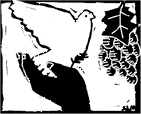Fencing proposal threatens human lives, environmentIn October 2002, the Border Patrol (USBP) and the Army Corps of Engineers (USACE) released a draft document analyzing the potential environmental consequences of building a 249-mile fence along most of the Arizona border with Mexico. If erected, the fence would be 2 1/2 times longer than the Berlin Wall and would be longer than any existing border fence in the world, according to Sean Garcia of the Latin America Working Group. The scope of the endeavor would drastically change the environmental geography of the Arizona border region. The fence would typically be 10 to 15 feet tall, and a double layer of fencing would run along some high-trafficked areas. A 354 page Programmatic Environmental Impact Statement (PEIS) details many other infrastructure items on the Border Patrol’s wish list for its Tuscon and Yuma Sectors, including roads, sensors, cameras and stadium style lighting that could illuminate up to 1,708 acres for 10 to 12 hours a day. There is no budget or timeline in the PEIS, and the Border Patrol has not indicated which, if any of the proposals will be implemented.
From the beginning, environmental and human rights organizations have had serious objections to the proposed work. Specifically, the construction of a fence of these proportions would force migrants into perilous stretches of desert and dramatically raise the number of deaths, cut off the migratory patterns of endangered species and destroy pristine habitats, bisect the Native American Tohono O’Odham nation, and cost hundreds of millions of dollars. In addition, fencing projects carried out over the past 10 years have not reduced the number of illegal migrants to the US, but simply redirected their travel routes to other border areas. Concerned groups are further worried that a revised document to be revealed in the upcoming months may no longer examine the cumulative, state-wide impact of the project in detail. Instead, it is possible the consequences of this massive building endeavor would be analyzed in ten separate documents, each covering a different USBP Station Area of Operations. Groups say this division will make it difficult to track projects and obscure the overall impact of a contiguous fence.
The proposal to fence off Arizona is part of a wider buildup of militaristic and high-tech infrastructure along the border. Infrared cameras, motion sensors, helicopters with infrared scopes, and unmanned drones like the ones used in Afghanistan, now survey the area. A new "Vehicle Stopping System" is being tested in San Ysidro, which catches speeding cars in a net if they refuse to stop at ports of entry. The new counter-terrorism focus along the border has prompted coordinated military missions and intelligence sharing between the US and Mexico, creating an international national-security network. More than 9,000 soldiers have been deployed along Mexico’s northern border to help protect the US from terror attacks. The troops will work with military missions in the US already stationed along the border. National Guard troops, US Special Forces, Army Rangers, and Marines currently assist with southwest border monitoring efforts. New York Times reporter Tim Weiner noted, "The American military is moving closer to using its soldiers as law enforcers, as Mexico has done for years." (NYT, 3/23) - Julia Dietz Religious Task
Force on Central America and Mexico
w
www.rtfcam.org |


